RELATED NEWS
- Design and Brand Identity: A Conversation with Mario Ruiz
- Living in the open-air, the new space concept created by MUT Design for the Das Haus – Interiors on Stage installation at the imm cologne 2020
- Focus on Spain’s design: interview to Santiago Sevillano
- Focus on Spain’s design: interview to Sandra Figuerola
- Focus on Spain’s design: interview to Mario Ruiz
- Focus on Spain’s design: interview to Francesc Rife
- Focus on Spain’s design: interview to Nacho Lavernia
- Focus on Spain’s design: interview to Karim Rashid
TAGS
- designers
- industrial designers
- interviews
- santiago sevillano
- spanish design
- spanish designers
Focus on Spain’s design: interview to Santiago Sevillano
Born in 1975 in Meliana (Valencia, Spain), Santiago Sevillano Sebastiá grew professionally in his father’s studio where he learned to master upholstery techniques and took the first steps towards the design world. He studied industrial design at the ESDI CEU, later specializing at the Polytechnic University in Valencia and at the School of Architecture. In 2004, he founded his studio in Valencia where he currently developed his projects assisted by his team of designers and collaborators.
The studio has specialized in Industrial Design and Design Management, developing integral projects for leading companies at international level. Their vision of design goes beyond fads and seeks to create products capable of generating significant experiences for people and solid business opportunities for companies.
In this interview, Santiago tell us a little bit more about himself and his career and bring us up to speed on his understanding of design, the way he works, his iconic products and new projects.
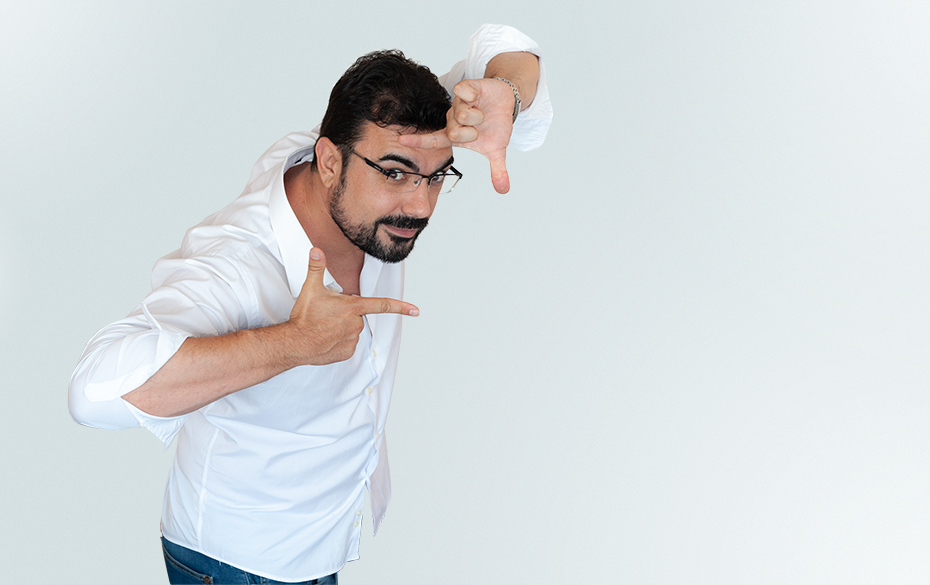
- They say that since you were a child you have lived surrounded by wooden and metal frames and fabrics in your father’s upholstery shop. Is that where you discovered your vocation? Tell us a little more about your beginnings and your career …
Yes, this is true, you are well informed. By the way, there are still a lot of frames left in my father’s old workshop, which is now my studio. I grew up there, like a master upholsterer, the son of another master upholsterer. The workshops, factories, industrial parks are a second home to me, I feel comfortable in these places and in these disciplines.
In my childhood, in the ’80, the leading figures of the Valencian design scene, such as Juan Montesa, Vicente Soto, Paco Camus, Daniel Nebot, visited regularly my father’s workshop “to adjust the dimensions of their drawings”, as they said, or see how to “build the prototype”. All was so artisanal back to that time.
Santiago Sevillano presents the Nansa Collection by MUSOLA at the imm cologne 2019. An outdoor collection inspired by a basket used to contain seafood in the Albufera, the lagoon near Valencia.
We got the most out of an in-perspective freehand drawing or out of photos of a detail, which later could be added to a project. It was all very magical and motivating. It was such a creative work that you literally bring out something from the “nothing”. I think that something of that former spontaneous approach to the creative process is still somewhat present in my work.
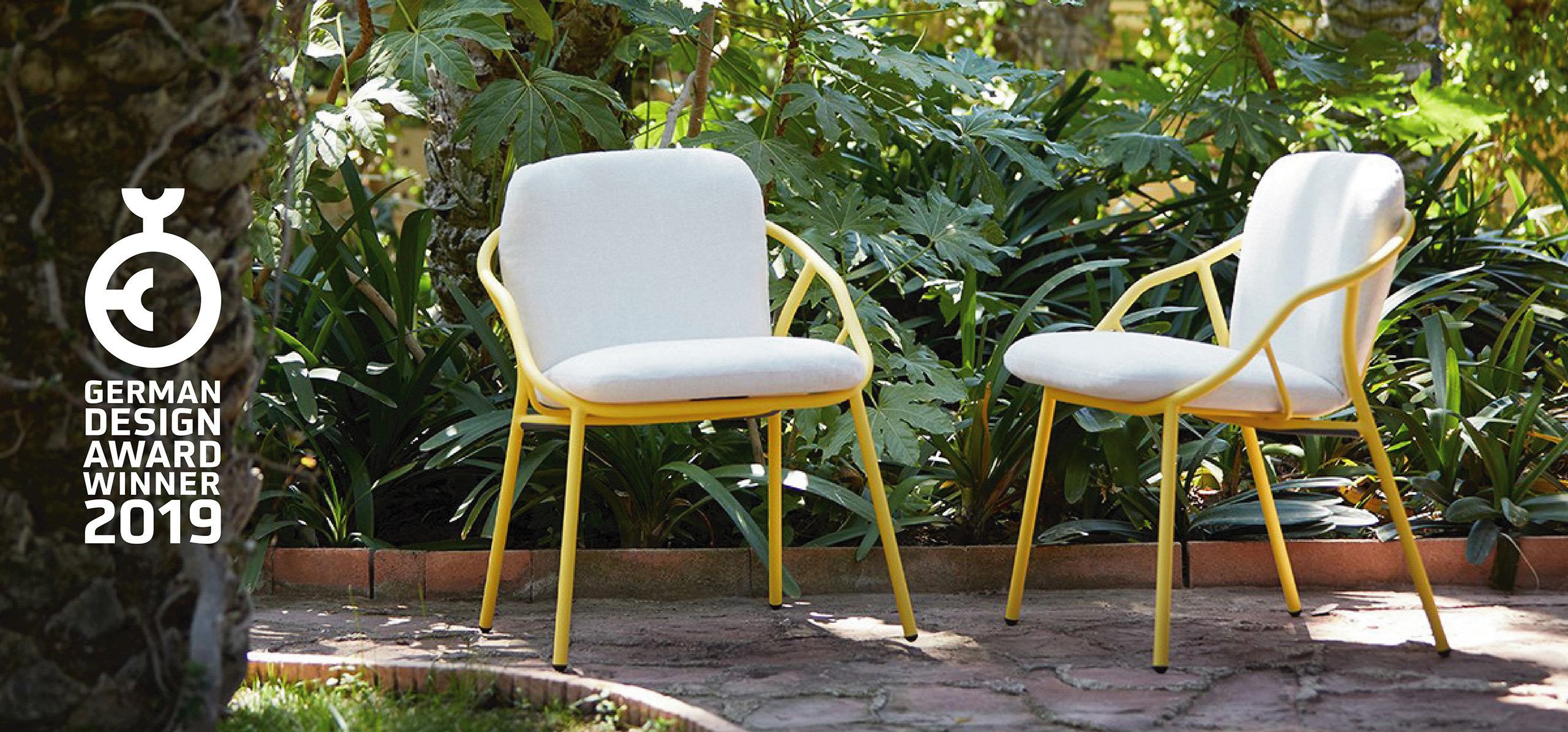
The NANSA Collection by Santiago Sevillano for MUSOLA. German Design Award 2019
Later, I decided to assist the ESDI CEU design school, where I discovered the other side of the design process, a less prosaic, yet more creative and cultural approach. I really don’t see any duality between thinking and doing, they can complement each other perfectly. I think this is what made me opt definitely for that way of professional expression.

SAHARA sectional sofa. Upholstered dune for homey comfort. Santiago Sevillano for BAOTIAN
And then, I continued my education studying engineer and architecture and even teaching… but I think design is like a first love, which defines you forever.
Once I found my way, I followed the same steps as in the workshop, not limiting myself to just one market or one region. My field of activities is not restricted to the furniture, tableware or lighting sectors, because I think that the design methodology should provide a solution-based approach to solving problems, whenever is needed.
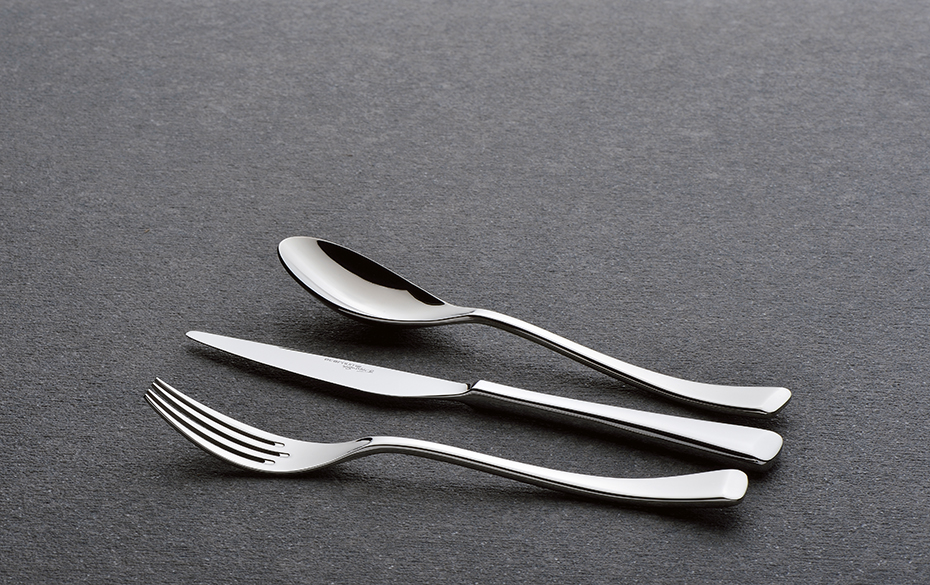
MAHÉ cutlery. Ergonomic elegance. Santiago Sevillano for ETERNUM
- What is design for you and what role does design play? Give us a brief definition from your point of view …
Design is an exciting, dynamic discipline applicable to infinite fields. When it is applied with effectiveness, it can produce endless, successful results. In my opinion, design should contribute silently to improving the quality of life; it should culturally define things and make people evolve.
It is an art of passion, magic, illusion and love, all at the same time. I say “art”, but I have to point out that the industrial design community is still debating if design should be considered an art or not. And most of the professionals do not support this point of view.
Another point is that each project can change the way we see things and understand them. It can even change our language. Each designer has its own creative characteristics.
To wrap it up in a few words, design for me is to elaborate, organize and give a sense to ideas, responding to people’s common needs.
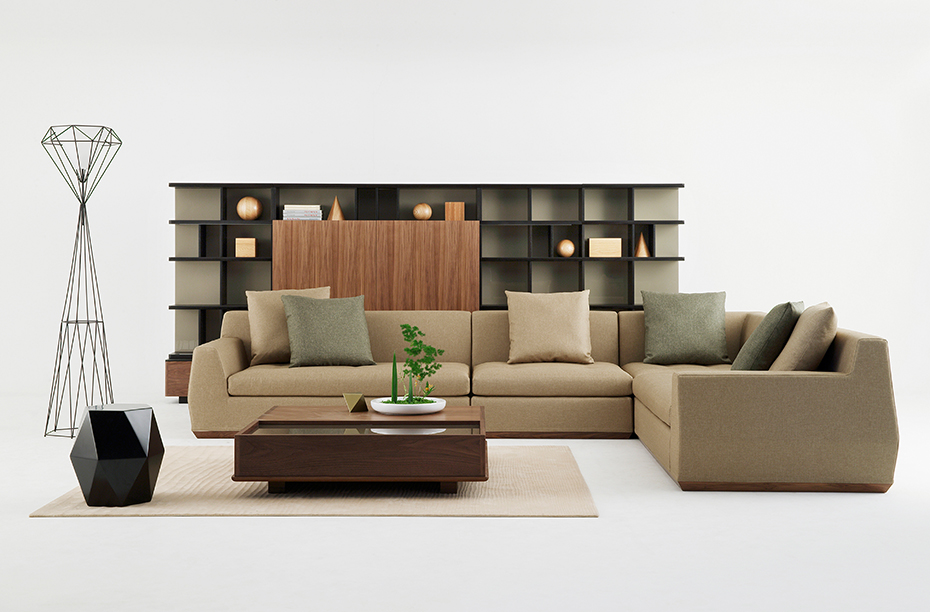
DIAMOND sectional sofa. Sober lines, maximum comfort. Santiago Sevillano for HC28
- Where do you start when developing a new product?
First thing: understand the information. Sometimes getting it and managing it is not that easy. In my experience, building bridges and links between the project, the market, the client is crucial to trace a good development path and be a success.
Nevertheless, there are no fixed formulas, not even one method. You never know how it could end up. That’s why all the process is so challenging and motivating.
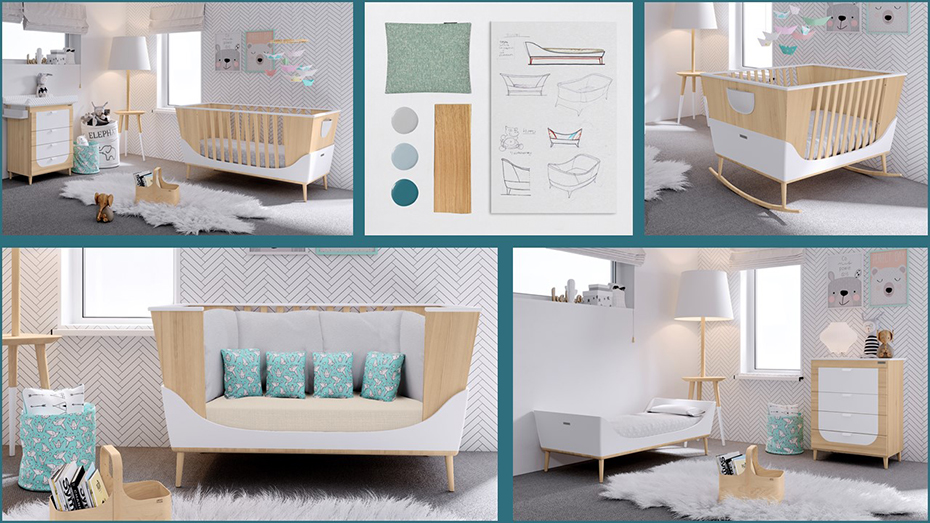
DIPPO baby furniture: a cradle, a sofa, a bed in just one piece of furniture. An evolutionary concept by Santiago Sevillano for MICUNA
- When you create an object and / or work on a new project, what importance do you give to the function and what to the aesthetics?
It depends, there are many variables and balances within each element that should be considered when developing a new project. The taste for aesthetic detail is very important, but it also depends on several factors. On many occasions, deadlines, investments, the market can make a difference.
But in the end, I would say that conceptual coherence is a sine qua non condition to get a formally attractive result.
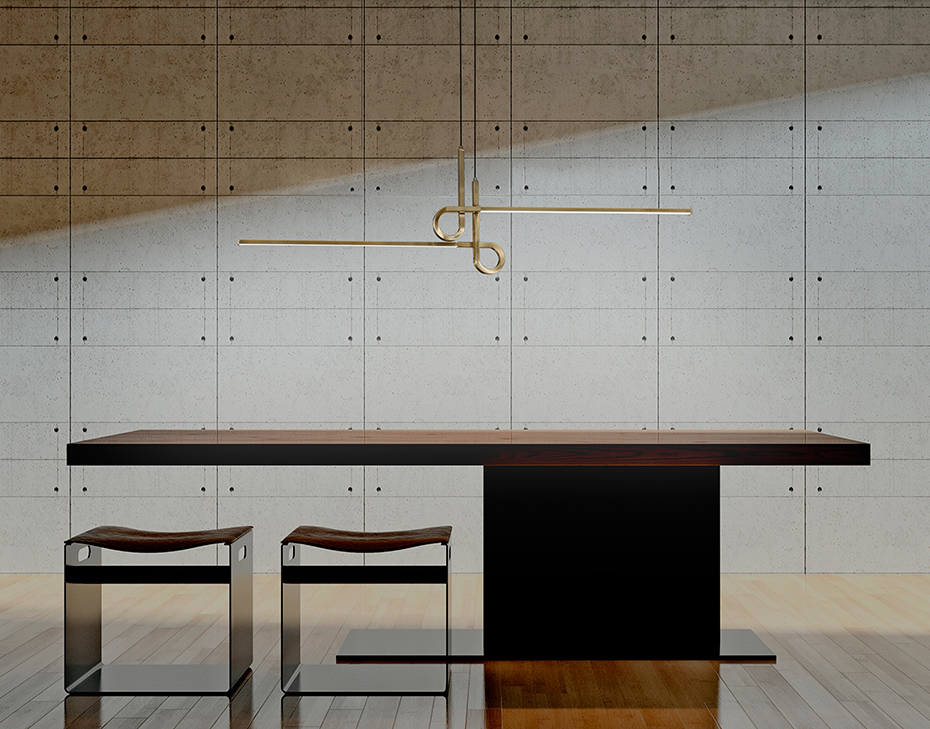
CINTO lighting collection, a successful marriage of curve and straight lines. Santiago Sevillano for MANTRA
- Material, colour, shape … What are the ingredients, which you consider most important, to achieve an exceptional design?
I think my formula is much about avoiding standards and introducing uniqueness. In addition to a solution, you must provide a message, create something that makes the market dialogue.
Conceptually speaking, a great part of the success of a product relies on the fact that the container and the content go completely together. That makes it timeless, understandable and almost eternal.
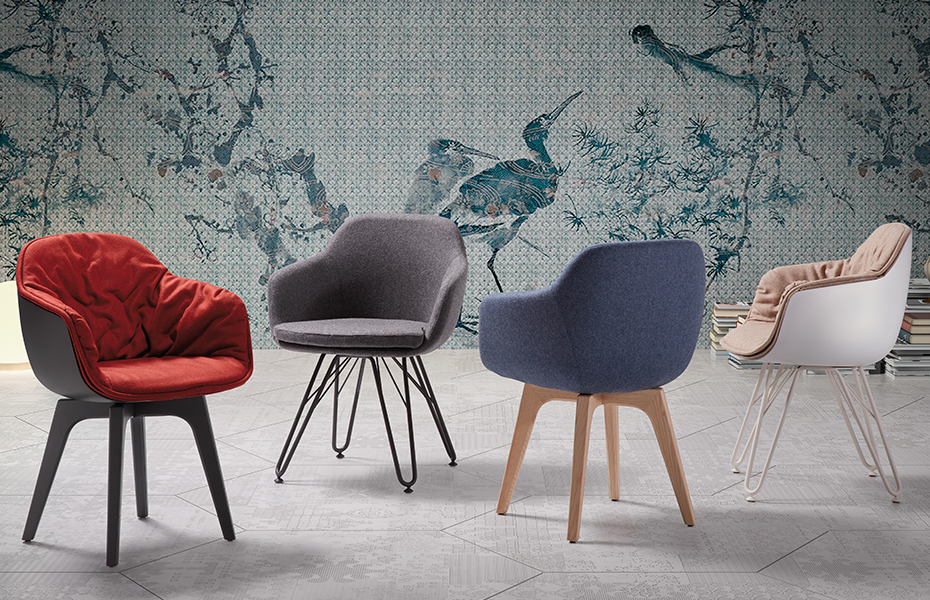
LAP chairs. Carefully designed and upholstered with care to get a cosy feel. Santiago Sevillano for DRESSY
- Straight lines or curves?
All forms, even the emptiness and the silence define a space or a piece of music. The important thing is to select wisely what adds visual interest and depth and what can be discarded.
Obviously, curves are more familiar, they form part of the human landscape and therefore they give us stability. Their contribution to any geometry is undeniable, but the expression of its function must be sincere in order to establish a direct link with the user.
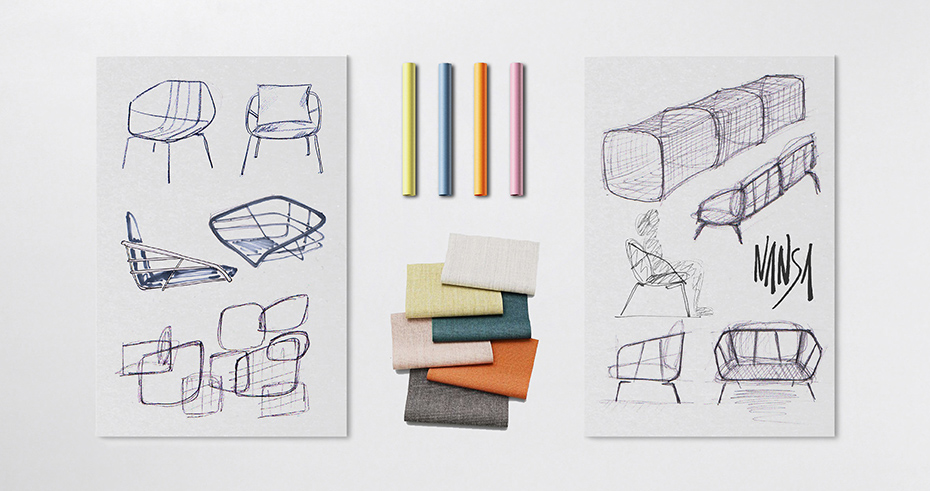
The sketch board of the NANSA collection. Creativity and style at work! Santiago Sevillano for MUSOLA
- From your attendance to the Milan Salone and the Beijing Design Week to the German Design Award, which awarded NANSA, the outdoor furniture collection that you designed for Musola, and your collaborations with international firms. Which project do you feel most proud of and why?
That is a difficult question. I have worked on both high-profile and more humble projects, some have triumphed and others not. I appreciate them all because they made me face new exciting challenges. NANSA is one of the latest challenging projects and a milestone in my career. I just could shape things learned from my different experiences into a new, inspiring narrative. And yet this is not only my personal achievement but something that I attribute to all my team. The success of a project, as well as its conception, design and development, is always the fruit of collaborative work.
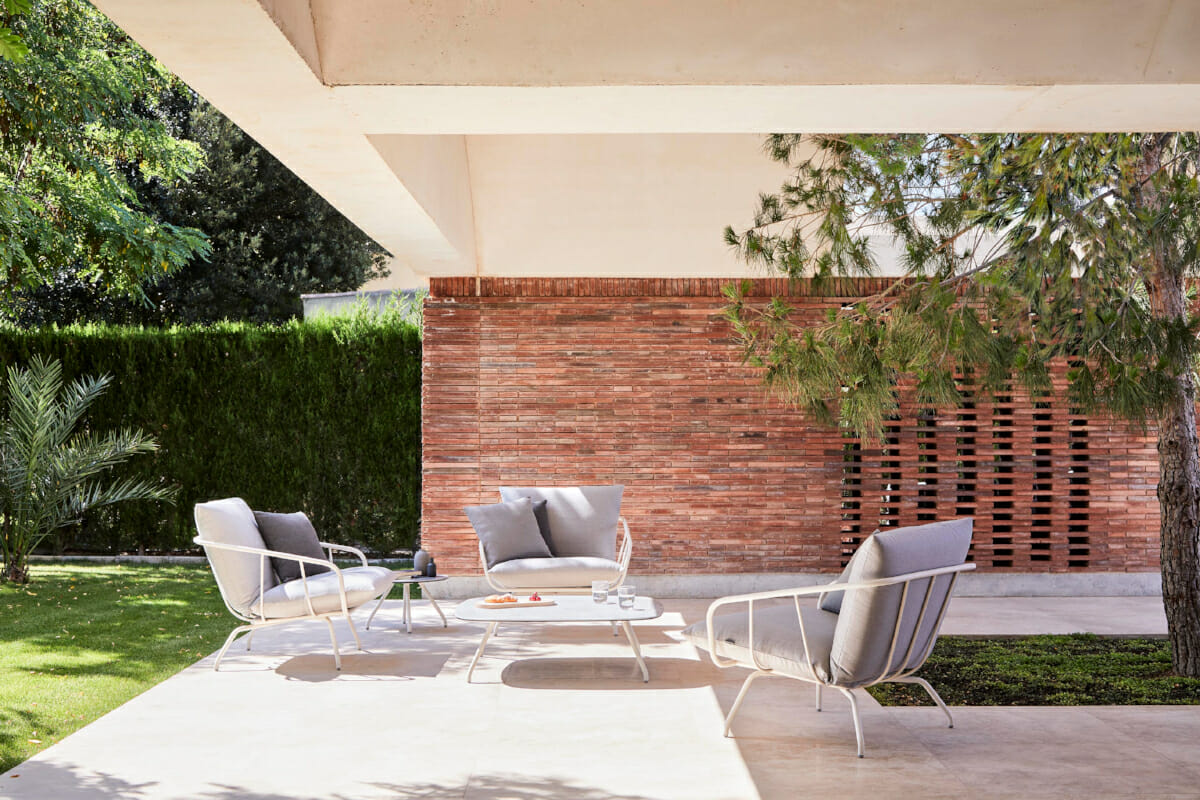
NANSA outdoor lounge furniture. Conceived to impress. Santiago Sevillano for MUSOLA
If there is a common link between the Salone, the fairs in China and the German award, this is the search for creative excellence and the quality of its conceptual development. At the last edition of the Maison&Objet we all could see for ourselves that an oriental designer can contribute an interesting vision as any other designer.
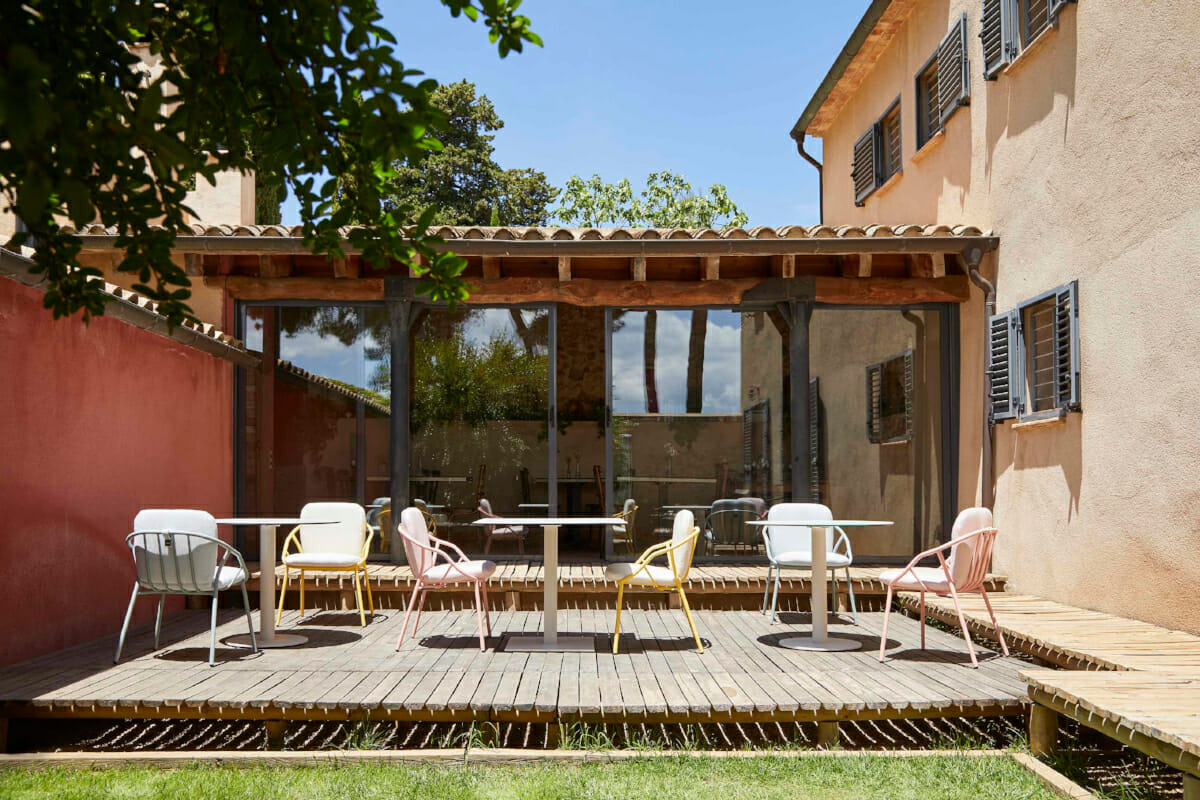
NANSA chairs. Light yet strong. Santiago Sevillano for MUSOLA
- How did your collaboration with Mobliberica and the brands Dressy and Musola get started / come about?
It was a totally chance encounter at the Salone in 2015. We understood each other immediately. They are professionals with long experience, and that can be seen from the very first moment. The organization, the management and the vision of the company are quite clear and all that results in an excellent industrial performance, dynamic external growth and development of a strong product portfolio.
At the time we first met, they were looking for a designer with extensive experience in the upholstery sector and that matches perfectly my profile. Since then, we have developed a very fruitful and ongoing collaboration which has produced some successful projects: the NANSA outdoor collection for Musola, the LAP chair for Dressy and the KEDUA chair for Mobliberica.
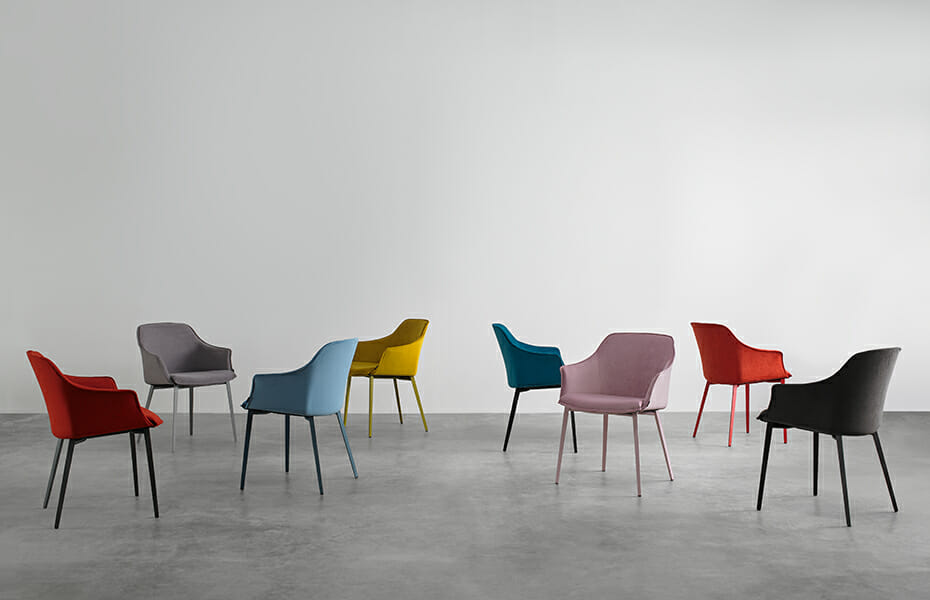
KEDUA chairs. A fresh, contemporary classicism. Santiago Sevillano for MOBLIBERICA
- Your design hero, if you have any?
Common sense, essential values and sincerity are my real design heroes and what inspires me in my everyday work. Having to name one design icon above all others, I must say that I have always been fascinated by Gaudí for the way he turned his search for new solutions into a discipline. His geometric studies that gave way to organic volumes are what have inspired me the most during my career.
I am a somewhat atypical designer who does not focus on the names but on the results and careers. My respect and admiration of the professionals who have contributed and still contribute with their work to the market do not allow me to name just one or a few.
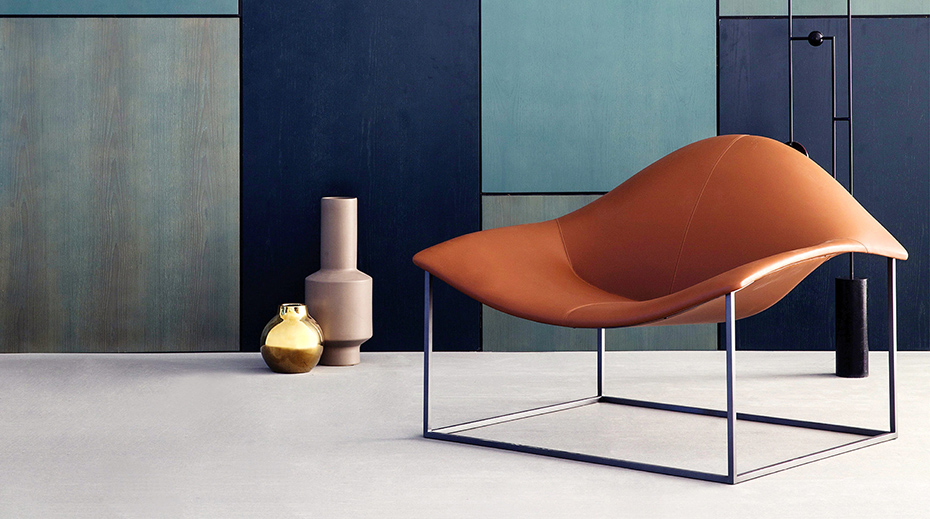
OLALA chair. The perfect mixture of appearance, function, concept, and experience. Santiago Sevillano for HC28
- How is the design scene in Spain? Is there any specific feature that defines the identity of the made in Spain design?
The Spanish design scene is now a benchmark for quality. We can boast a top-notch roaster of internationally recognized designers in all areas who are opening up a door to new possibilities and provide the market with new inspiring ideas.
An incredible gold mine of talents who are making their way in the design industry and consolidating their position in the international scene. Companies and institutions have worked hard on promoting their work and making them stand out in the market. We owe them a lot.
The passion we put in to create things is really the one thing that marks out Spain – that is a hallmark of this country. Although sometimes it is not that easy, we are providing high-level creative solutions – with strategic bets not even conceivable years ago, yet they are a solid reality now.

CORAL REEF chairs & table by Santiago Sevillano for ROBERTI
- Your work takes you to many places and lately to countries as far away as China. According to your experience, how do they perceive the Spanish brands abroad?
The perception of the country and its image is high. After all, we are a country with a great culture and history. In the case of design, we are really writing an important chapter.
We have a lot of things to express and put out to the word; styles that make the same thing have a completely different register.
Spain is unquestionable the rage right now, thanks to the intense and sincere work of people and institutions. In a culturally globalized world linked by an almost immediate communication, where processes can be industrially homogeneous, we are contributing something interesting and different every day for any market.
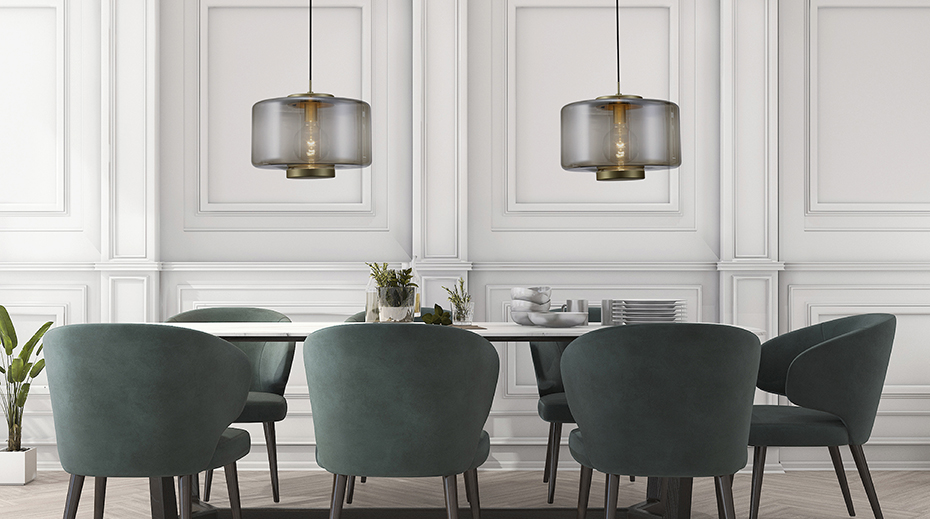
JARRAS pendant lighting. Timeless appeal. Santiago Sevillano for MANTRA
- Tell us about your future projects. Do you have a dream that you would like to turn into reality or a brand that you would like to work with?
We all have dreams. Mine is to contribute. I mean, I would like to collaborate with those brands that strive to provide the market with unique solutions, based on quality and clear visions. It can be either an established brand or a new to the market, what really matters to me is its background and know-how. This way, we can understand if there are real possibilities to collaborate and evolve.
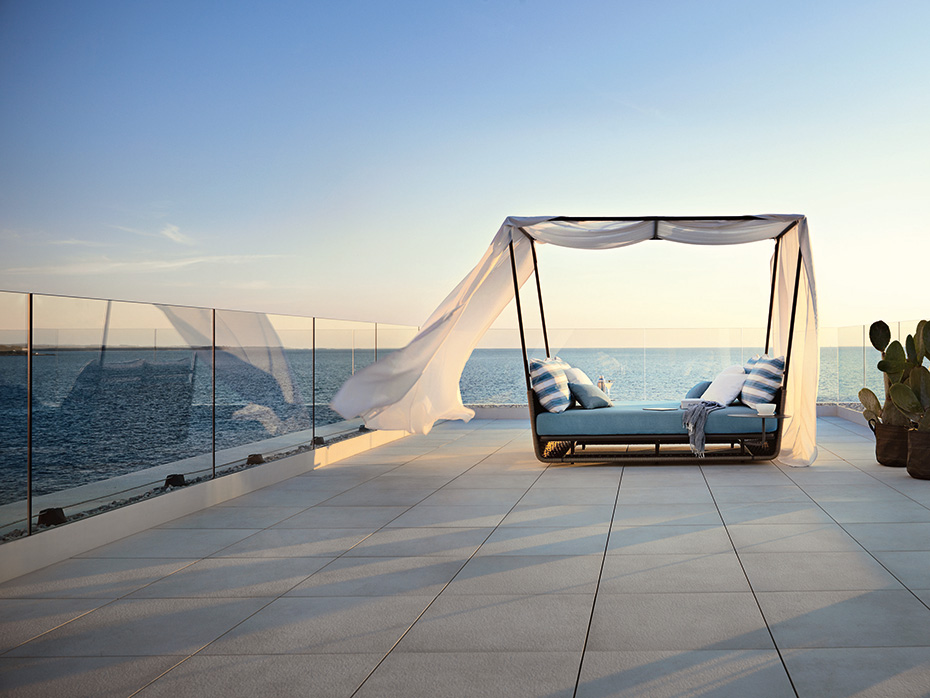
PORTOFINO daybed. Mediterranean style and elegance. Santiago Sevillano for ROBERTI
- How is design evolving in the digital era and how will technological advances shape new products designs?
I believe that the evolution of similar cultural substrates and the access to raw materials and primary processes will be crucial to find the right solutions for new projects and challenges.
Localisms have much to do with differentiation. In a world where production is often relocated, the success of a project depends much on the possibility to have access to local resources. Whatever: universities, fabrics, robots, or plastic materials. Right now, the 4.0 production system with customised 3D manufacturing processes makes short, well-defined series much more attractive. In a near future we will see a revolution.
Amazon and other platforms have put immediacy in vogue. There is no time, 2 years is an eternity. In 6 months, a product must be on the market. Rotation is a need and when a product survives 5 years it turns almost timeless. With technological objects, it happens that the user asks for 3,4 or 5 different finishes of the same product and then returns those that he does not like.
Giant production companies like Kuka Home have phagocytized small, historical companies and they are now selling their products in any part of the world. What makes the context even more complex is the fact that financial investments are constantly looking for new patents and industrial property registries. In short, new products and the added value that maintain them in the forefront accounting for the fluctuation of the investments.
Getting back to your question, world is changing faster than ever – not only technologically but also socially, environmentally, politically, and economically. In the midst of these shifts, designers have the crucial task of thinking about what our future will look like and how we will interact with it. A challenging task, indeed…
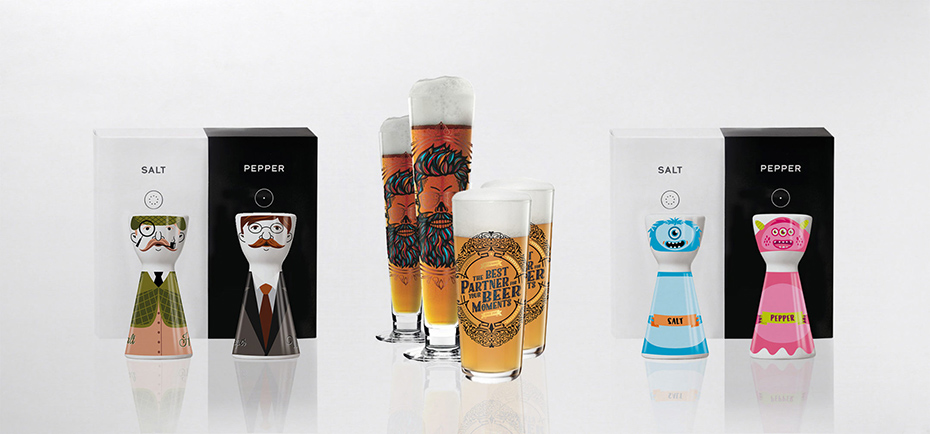
Graphic design by Santiago Sevillano for the German brand. A playful vibe at the table…
Find out more: www.santiagosevillano.com
